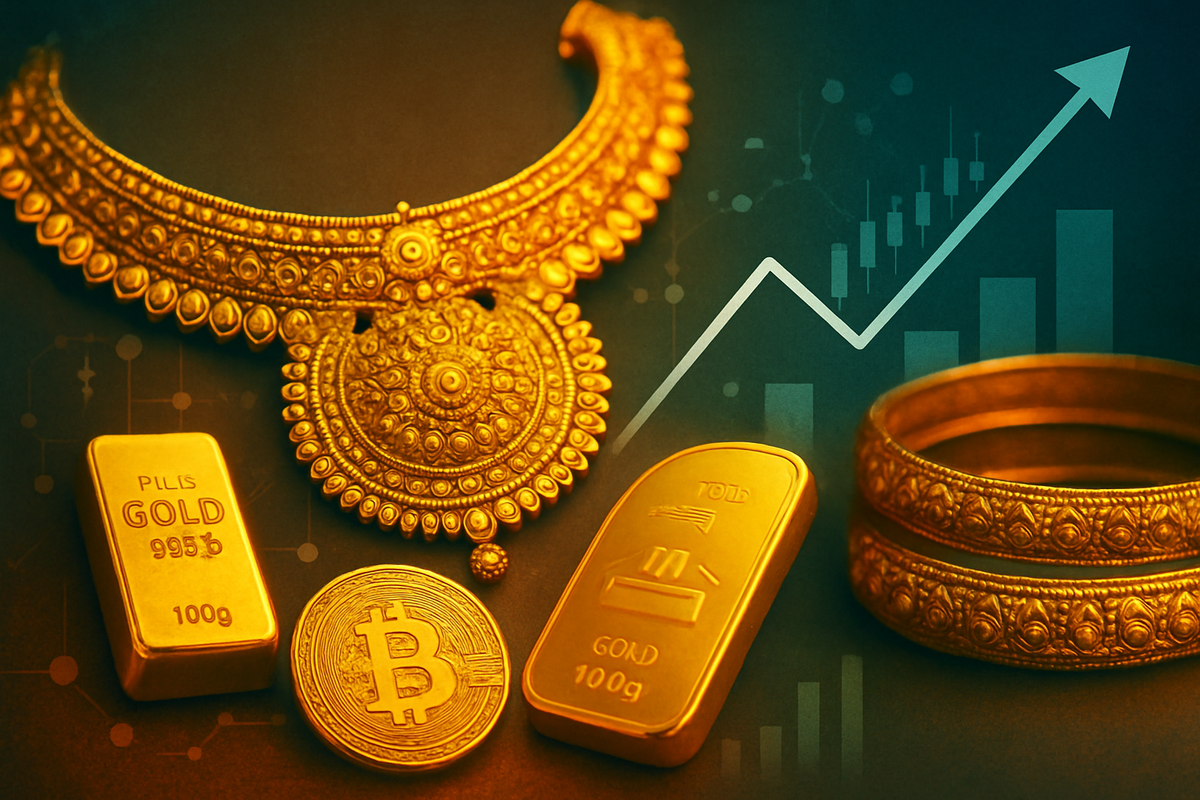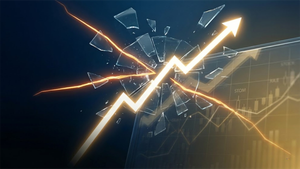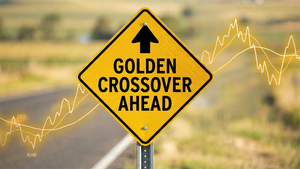
India, a nation deeply intertwined with gold through centuries of cultural and religious significance, is currently navigating an unprecedented "golden transformation." As of October 2025, gold prices have surged to historic highs, fundamentally reshaping the ancient buying traditions that define the country's relationship with the precious metal. This dramatic shift, driven by a confluence of global geopolitical tensions, a weakening US dollar, anticipated interest rate cuts by the US Federal Reserve, and robust central bank buying, presents a complex landscape for both consumers and the financial markets.
The immediate implication for the Indian market is a fascinating paradox: while the physical volume of gold sold has seen a decline, the total transaction value for jewelers has sharply increased due to the elevated prices. Consumers are increasingly prioritizing gold as an investment for wealth preservation over ornamental display, leading to a notable pivot from elaborate jewelry towards gold coins and bars, and a growing interest in digital gold and Exchange Traded Funds (ETFs). This recalibration of demand signals a profound evolution in how India perceives and acquires its most cherished asset.
The Shifting Sands of Gold Demand
The current gold price scenario in India is nothing short of historic. As of October 2025, 24-karat gold has reached approximately ₹13,069 per gram, with some reports indicating a peak of ₹134,800 per 10 grams on Dhanteras, marking an astonishing nearly 65% increase over the past year. This surge is not merely a domestic phenomenon; it's fueled by a global environment of uncertainty, with gold serving its traditional role as a safe-haven asset. Domestically, the depreciation of the Indian Rupee against the dollar has further exacerbated the cost of imported gold, amplifying local prices. Analysts are even projecting the possibility of gold breaching ₹150,000 per 10 grams by 2026, signaling a sustained upward trajectory.
The timeline leading to this moment has seen a consistent upward trend, accelerating significantly in the past year. This has placed immense pressure on traditional buying habits, particularly during culturally significant events like Diwali, Dhanteras, and the wedding season, where gold purchases are often considered auspicious and obligatory. Key players in this evolving market include millions of Indian households, who collectively hold an estimated $3.8 trillion in gold, jewelers ranging from large national chains to independent artisans, and government policies impacting import duties. The global financial landscape, including the actions of central banks and international investors, also plays a crucial role in dictating price movements.
Initial market reactions have been swift and discernible. During Dhanteras 2025, gold jewelry demand reportedly saw a significant decline of nearly 30% compared to the previous year, while the demand for investment-grade gold coins and bars experienced an unprecedented surge. This indicates a clear shift in consumer priorities. Furthermore, there's a growing preference for lighter-weight and lower-carat gold jewelry (e.g., 18K instead of 22K) to manage budgets, and a noticeable substitution effect with more affordable alternatives like silver and diamonds. The active utilization of old gold exchange offers, allowing consumers to trade in existing jewelry for new pieces, has also become a popular strategy to offset high purchase costs.
Companies Navigating the Golden Tide
The record-high gold prices are creating distinct winners and losers within India's vast jewelry and financial sectors. Large, organized jewelers with diversified product portfolios and strong marketing capabilities are better positioned to adapt. Companies like Titan Company Limited (NSE: TITAN), a prominent player in the Indian jewelry market through its Tanishq brand, are likely focusing on promoting lighter, more affordable designs, expanding their gold coin and bar offerings, and leveraging their brand trust for gold exchange programs. Their ability to offer a wider range of price points and cater to evolving consumer preferences for investment-grade gold or lower-carat jewelry gives them an edge.
Conversely, smaller, independent jewelers, who often rely heavily on traditional, heavier jewelry sales and may lack the marketing budgets or diverse inventory of larger players, are struggling with muted demand from price-sensitive customers. Their business models are more vulnerable to the shift away from elaborate ornaments. However, the overall Indian jewelry market is still projected to grow, with some reports anticipating a Compound Annual Growth Rate (CAGR) of 5.2% to 6.3% from 2025 to 2033, suggesting that adaptable players will thrive.
The financial sector is also seeing an impact. Companies involved in gold-backed Exchange Traded Funds (ETFs) and digital gold platforms are experiencing a boom. The surge in investment demand for gold ETFs, evidenced by strong inflows and record new accounts in September 2025, benefits asset management companies offering these products. Similarly, digital gold platforms, which offer direct gold exposure without manufacturing premiums, are gaining traction, creating opportunities for fintech companies operating in this space. On the other hand, financial institutions heavily reliant on gold loans, while potentially seeing increased collateral value, might also face risks if a sudden price correction occurs or if borrowers struggle with repayment due to economic pressures. Rajesh Exports (BSE: 531500), a major player in gold manufacturing and exports, will need to strategically navigate the changing domestic demand landscape while leveraging its international presence.
Wider Significance and Economic Ripples
This golden transformation fits into broader industry trends emphasizing value, investment, and digital adoption. The e-commerce boom in the jewelry sector is a significant trend, with online platforms gaining traction due to trust in hallmark certifications, brand assurances, and convenience. The Indian jewelry market, valued at $91 billion in 2025, is projected to reach $146 billion by 2030, with e-commerce platforms claiming an increasing share, particularly for everyday wear and lightweight designs. This digital shift represents a modernization of a traditionally physical market.
The ripple effects extend to India's macroeconomic landscape. High gold imports, driven by festival-season stocking and persistent investor demand, can widen India's merchandise trade deficit and put pressure on the Indian Rupee. This necessitates careful monitoring by policymakers. However, the substantial gold holdings of Indian households, valued at approximately $3.8 trillion (equivalent to 89% of India's GDP), also provide a "positive wealth effect" to household balance sheets, acting as a significant store of value and a buffer during economic uncertainties.
Regulatory or policy implications might include continued government efforts to manage gold imports through duties or other measures to stabilize the trade deficit. However, given gold's deep cultural roots, any drastic policy changes would need careful consideration to avoid public backlash. Historically, gold has always been a preferred investment vehicle in India, viewed as a hedge against inflation and a safe haven. The current situation merely reinforces this perception, albeit with a modern twist towards more pragmatic, investment-oriented acquisition rather than purely ornamental consumption. The shift mirrors historical periods of economic uncertainty where gold's allure as a reliable asset intensifies.
The Path Ahead: Adaptation and Innovation
Looking ahead, the short-term possibilities suggest a continued environment of high gold prices, especially if global geopolitical tensions persist and major central banks proceed with anticipated interest rate cuts. This will likely solidify the trend of consumers opting for investment-grade gold products and lighter jewelry. In the long term, gold could potentially breach the ₹150,000 per 10 grams mark by 2026, further cementing its status as a premium asset.
This necessitates strategic pivots and adaptations across the industry. Jewelers will continue to innovate their offerings, focusing on modular designs, customizable lightweight pieces, and attractive exchange programs to cater to evolving consumer demands. The growth in digital gold and gold ETFs is expected to accelerate, creating new market opportunities for financial technology companies and asset managers. These platforms offer accessibility and transparency, appealing to a younger, digitally-savvy demographic.
Market challenges will include managing inventory costs for jewelers and navigating potential volatility in global gold prices. However, opportunities abound in the form of increased recycling of old gold, which benefits the domestic economy by reducing import dependency. Potential scenarios include a sustained shift towards gold as a purely financial asset, possibly diminishing its role in traditional elaborate celebrations, or a dual market emerging where investment gold thrives alongside a niche for high-end, bespoke jewelry. Investors should consider a balanced portfolio allocation, with precious metals making up 10-15% of holdings for stability, as recommended by experts.
A Golden Future, Transformed
India's golden transformation is a testament to the dynamic interplay between ancient traditions and modern economic realities. The record-high gold prices have acted as a powerful catalyst, accelerating a shift in consumer behavior from purely ornamental purchases to a more pragmatic, investment-driven approach. While the physical volume of gold sold may see fluctuations, the overall value and significance of gold in the Indian economy remain robust, albeit in a new guise.
Moving forward, the market will be characterized by innovation in product offerings, a continued surge in digital and investment-grade gold, and a nuanced adaptation by traditional jewelers. Investors should closely watch global economic indicators, central bank policies, and the evolving domestic consumer sentiment. The lasting impact of this period will likely be a more diversified and sophisticated Indian gold market, where the yellow metal continues to shine, not just as a symbol of tradition, but increasingly as a cornerstone of financial security and modern investment strategy. The golden age of India is not ending; it is simply transforming.
This content is intended for informational purposes only and is not financial advice





